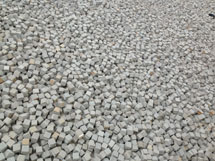



YOU WANT A SUSTAINABLE CONSTRUCTION? WE MAKE IT REAL. WE GIVE YOU 10 REASONS:
ECOLOGICAL AND EFFICIENT CONSTRUCTION ADVANTAGES
1- ASSESS NEEDS
The construction of each building has environmental impact, so you should analyze and assess the needs of space and surface, distinguishing between indispensable and electives, and prioritize.
2– DESIGN THE BUILDING TAKING INTO ACCOUNT THE LOCAL CLIMATE
Building, taking into account solar energy intake, optimizing lighting and natural ventilation to save energy and use fine weather.
3- SAVE ENERGY
Means to obtain direct financial savings. The most important factors include the balance between outer surface, volume and building insulation. Occupy little outer surface and good insulation leads to less heat loss. You can also save more by using high-performance and low power consumption systems for ventilation, artificial lighting and appliances.
4- RENEWABLE ENERGY SOURCES
The design of a building should assess positively the use of technologies that use renewable energy (photovoltaic panels and solar energy, biomass HVAC, rainwater collection, grey and black water, use of Xeriscape, etc.) The production of hot sanitary water with solar heaters, or environment heat production with high efficiency boilers and buffer tanks, electric energy cogeneration systems, photovoltaic panels and wind generators is suitable.
5– WATER SAVING
The rational use of water means use of devices that reduce water consumption, or that use rainwater for various uses (toilets, washing clothes, watering plants, etc.)
6– CONSTRUCTING HIGHEST QUALITY BUILDINGS
Environmentally sustainable buildings have higher quality and longevity, they are easy to maintain and adaptable to changes of use. They require fewer repairs and at the end of their life cycle are easily removable and reusable.
7- AVOID HEALTH RISKS
The health risks for workers depend not only on safety in work, but also on building materials used for construction of the building. Large amounts of solvents, dust, fibres and other toxic materials are harmful, even after the construction and for a long time contaminate the interior of the building and cause difficulties and / or diseases to humans and animals that inhabit the place.
8– USING LOCALLY GENERATED RAW MATERIALS
The use of materials obtained from local raw materials (abundantly available) using processes involving low energy, significantly reduces the environmental impact. The use of local materials implies shorter transport times, reduces fuel consumption and environmental pollution.
9- USE RECYCLABLE MATERIALS
The use of recyclable materials prologues retention of materials in the economical and ecological cycle and thus, reduces the consumption of raw materials and the amount of waste.
10– MANAGE THE WASTE ECOLOGICALY
For ecological control reasons, waste from demolition or rehabilitation - restoration of buildings should decrease its amount and variety, subdividing waste in different categories (plastics, metals, ceramics, etc.) The aim is to facilitate recovery, recycling or reuse of building materials.



